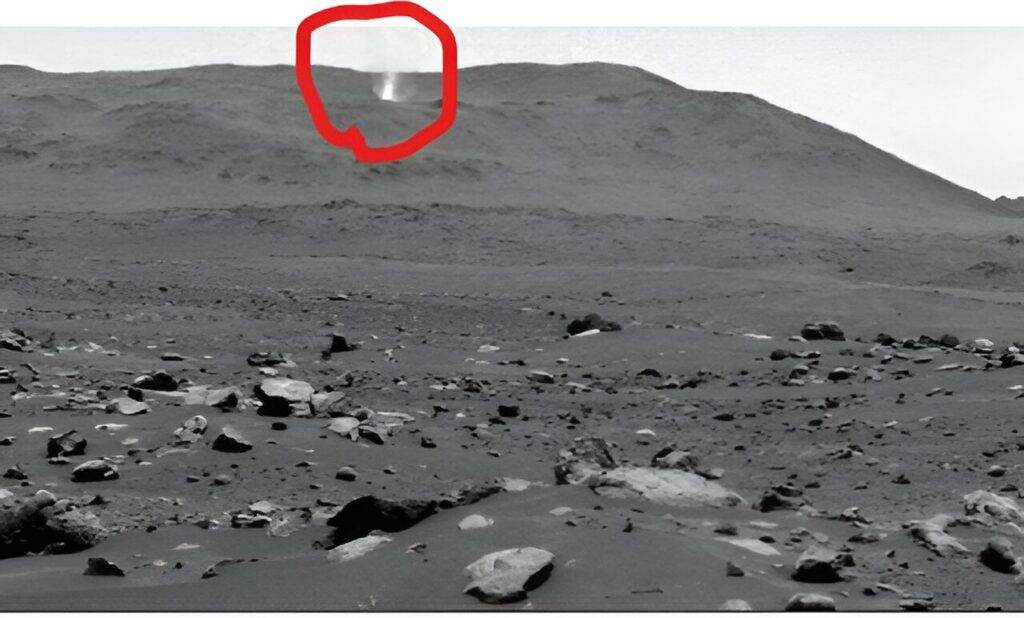NASA has published an animation made by the Perseverance rover. It is interesting because you can see a very impressive dust vortex on it.

Martian dust vortices are formed by the same mechanism as their terrestrial “brethren”. They arise in a situation of a strong temperature drop when the cells of warm air rising from the heated surface are mixed with the descending colder air masses.
The main difference between Martian and terrestrial dust vortices lies in their size and strength. Due to the lower gravity, tornadoes on the Red Planet may be larger than terrestrial ones. At the same time, since the Martian atmosphere is orders of magnitude thinner than the Earth’s, local tornadoes are much weaker than terrestrial ones and do not pose a threat to terrestrial technology. Rather, on the contrary, sometimes they can act as its “savior”. So, at one time, dust vortices cleaned the solar panels of the Opportunity rover from dust several times, allowing it to work much longer than predicted.
As a rule, Martian vortices are most noticeable in the spring and summer months, but in general, scientists cannot predict in advance exactly where and when they may appear. Therefore, the Perseverance and Curiosity rovers regularly monitor such events, taking black-and-white images to reduce the amount of data sent to Earth.

This tactic has borne results. On August 30, the Perseverance rover managed to capture a large tornado. It was at a distance of 4 kilometers from the vehicle, moving at a speed of about 19 km/h. Analysis of the images showed that its diameter was about 60 meters. Despite the fact that only the lower part of the 118-meter-high tornado got into the frame, scientists could still estimate its approximate height by the shadow. According to their calculations, the Martian tornado towered about 2 kilometers.
According to https://phys.org
Follow us on Twitter to get the most interesting space news in time
https://twitter.com/ust_magazine
